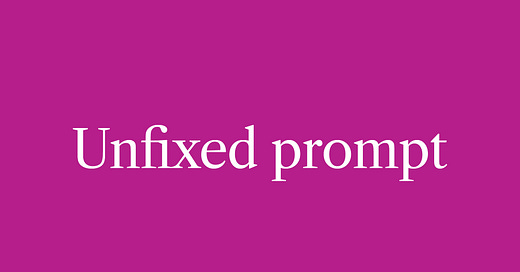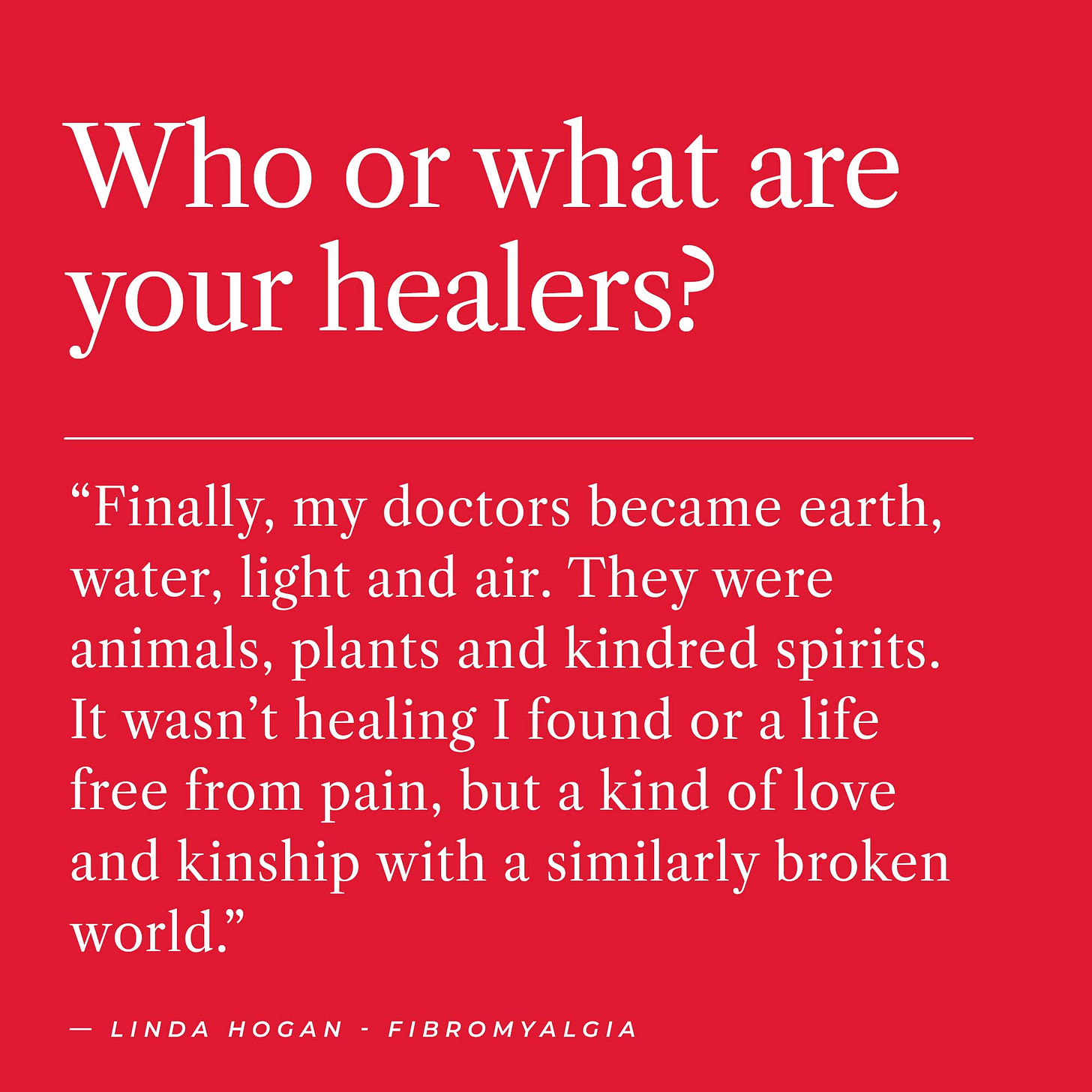I’m currently reading a memoir by one of my favorite authors, Linda Hogan. (Her novel Solar Storms was stunning.)
Hogan (of the Chickasaw lineage) begins her memoir telling us the story of a clay woman she fell in love with in a museum gift shop. The figure was made from clay, embodying Hogan’s spiritual connection to the earth. She had the figure shipped to her home, but it arrived broken. Despite Hogan’s efforts to fix the clay woman, it remained chipped and un-whole. At first Hogan was disappointed, but then she thought, “Yes, the woman who watches over us is as broken as the land, as hurt as the flesh people. She is a true representation of the world she flies above.”
Thus begin the lessons in Hogan’s book, The Woman Who Watches Over the World as she searches for “doctors” outside the medical system—human, animate and inanimate alike—and discovers a healing that isn’t free from pain but invites kinship and love to hold our collective brokenness.
What is your relationship to the word “healer” or “healing” and has it evolved over time?
Who or what are your healers?
Sometimes a healing moment sneaks up on us. Have you experienced this and what set the stage for it to occur?
Would you like to read the Unfixed memoir chronologically? Or have you missed previous chapters? You can access them all for free with the link below:






Nature has always been one of my greatest emotional healers. Being out in sylvan lands or by the sea calms my nervous system like no other. I feel nurtured. Safe. Protected. If I don't go for regular walks outside, I get anxious and out of sorts. Everything just runs smoother with Mother Nature in my life. And yay for these chronological chapters!!! Thank you!!!!
Kimberly,
It brings such joy to read that you, too, are a fan of Linda Hogan. Thank you for sharing here in the context of healing. In my work with persons struggling with health, we begin with the question: why is the body expressing as (fill in the blank) at this time?
The body speaks in metaphor, much like a poem, and is always giving us cues about our life; our life-force within always tilting toward the blossoming of our being. I refer to this approach to healing as a “philosophical physiology.” Wisdom is at play in the body itself, and the whole of our life. Which means that pain (physical and heart break) is written into the fabric of wholeness . . . and healing--as you and Linda Hogan so beautifully touch upon here. A philosophical physiology also understands that grief itself has a physiology to be cared for and that healing is not mind over matter but heart and body in harmony.
With love,
Renée